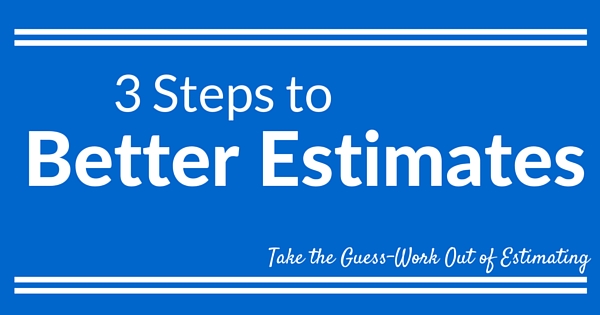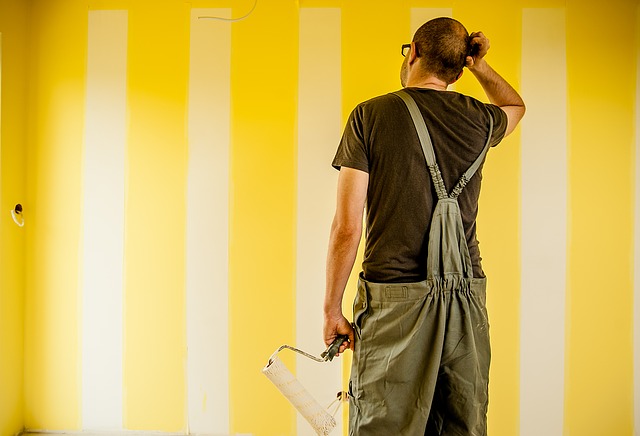Get more good stuff.

Does this sound familiar?
What you planned to take 1 week has taken a month. Something expected to cost a thousand dollars turned into ten thousand.
Asking for more time, money, or resources is painful. When your project is derailed, you see your goal drift further away and your credibility tarnish.
How were these estimates so far off?
Keep your projects on track and avoid these cringe-worthy moments with 3 steps that take the guesswork out of estimating.
1. Break work into packages
 Let’s use an example we can all relate to – painting a room. An easy project that will probably take a few hours.
Let’s use an example we can all relate to – painting a room. An easy project that will probably take a few hours.
Simple… right?
As someone who recently painted multiple rooms in my house, I can attest that there is a lot more involved in painting a room than it may seem. Some steps include:
- clean walls
- tape trim around windows and doors
- move furniture
- cover floor with tarp
- patch nail holes with drywall mud, sand
- remove outlet and light switch covers
- prime walls
- AND finally… paint
- first with a small brush around the ceiling, in wall joints, next to trim
- next with a roller brush for broad strokes
- lastly, scan the room for final touch-ups after the paint dries
Phew!
Avoid surprises, package manageable estimates
By creating a Work Breakdown Structure (WBS) with your team and discussing the work involved, you can uncover details that are essential for accurate estimates. A WBS decomposes larger tasks into smaller ones. Not only does this expose tasks that may not have otherwise been thought about, but the smaller packages are clearer and easier to estimate.
So instead of a single estimate for painting the whole room, you estimate the amount of time to tape, patch holes, and paint and add those together for a more accurate approximation.
2. Select an Estimating Technique
Estimating can be done in a variety of ways, but these are the 3 techniques that I’ve found to be the best:
1. Historical Data
If we know how long something took in past projects, what the cost was, and what risks were involved, we can use that as a strong estimate for future projects. You can’t argue with data – this produces the most accurate estimates.
If you have the data, start here. When you don’t have data, ask an expert.
2. Expert Knowledge
This is simply asking an expert “how long will it take?” This is a quick, fairly accurate, and commonly used technique. With the detailed tasks from the Work Breakdown Structure, you can gather input from someone who specializes in that particular area.
If there are not experts available on some tasks, move on to the next method of 3-point estimates.
3. Three Point Estimating
For each lowest-level task from the WBS, the person assigned to that task will provide 3 estimates:
- Optimistic – how many hours will the task take in a best case scenario
- Pessimistic – how many hours will the task take in a worst case scenario
- Realistic – how many hours will the task most-likely take
Each of these estimates goes into the following calculation:

The result accounts for the ranges of the estimate while providing heavier weight to the realistic estimate.
3. Account for Risk
Every project has risks because nothing ever goes exactly to plan.
We could accidentally paint the ceiling, run out of our supply, or the tape could peel some paint from the wall.
The bad news is that we cannot predict which risks will occur and become issues. The good news is that we can prepare as best as possible in advance by accounting for risk when estimating a project’s timeline and cost.
Risks should not be extra time or cash hidden in our estimates as “fluff”. Instead, the contingency we put in place in case of issues should be made known and visible within a schedule and budget.
It can be hard to know how to account for risk. Download the FREE Survival Guide: Risk-Ready Estimates for a step-by-step approach to estimating risks.
Reach your goals when you want to… without needing to ask for more.
